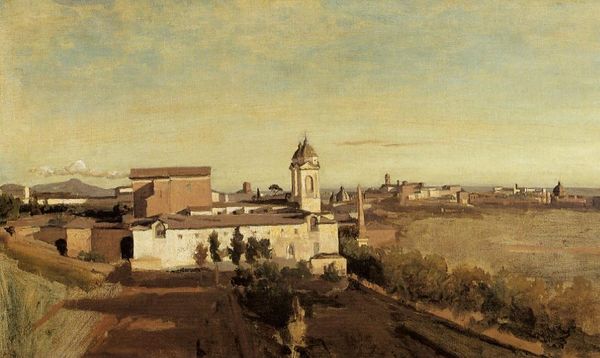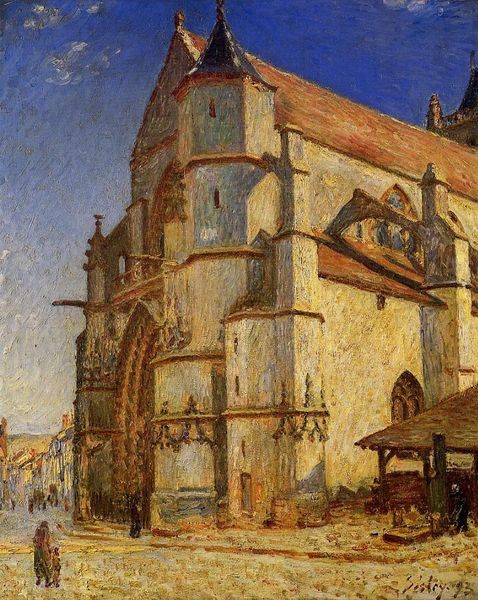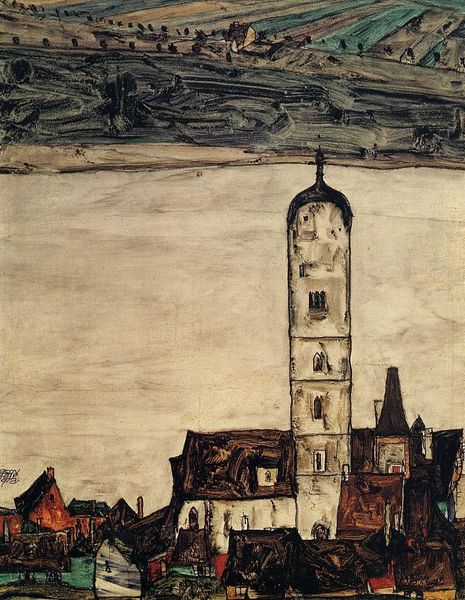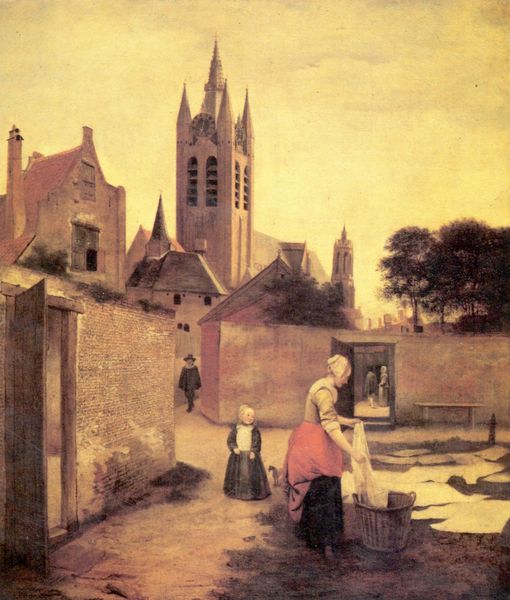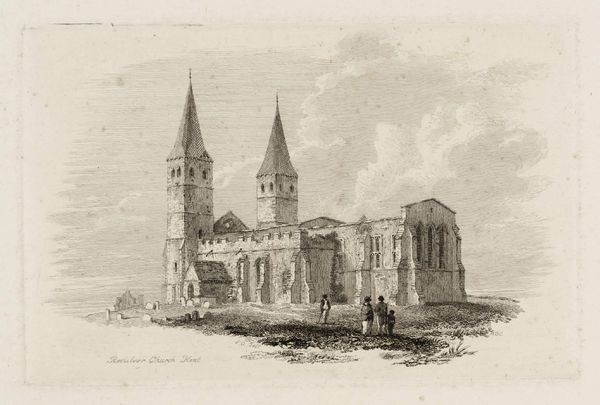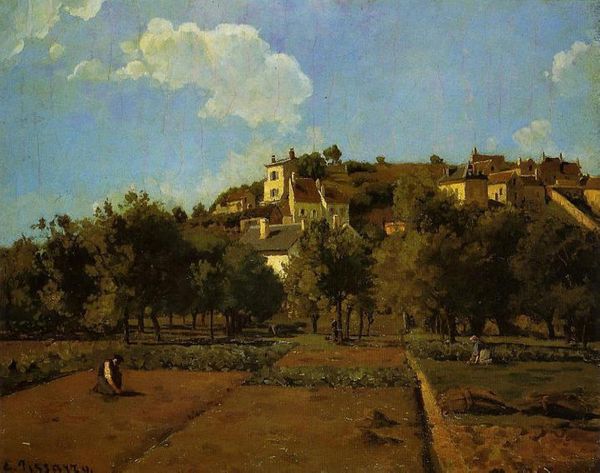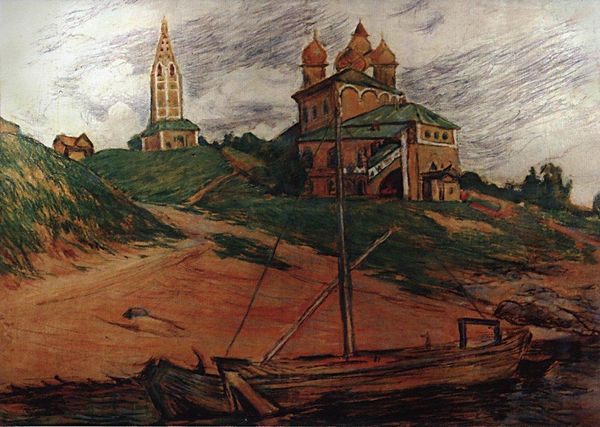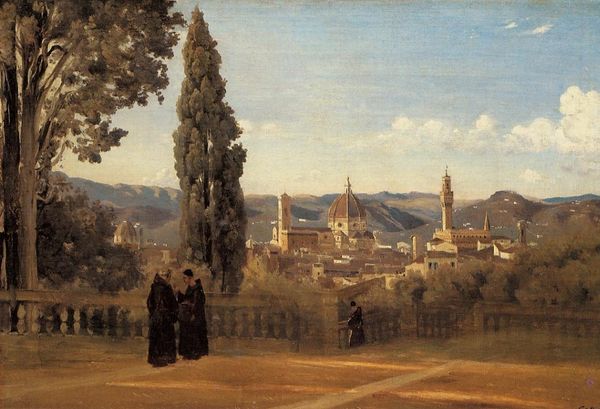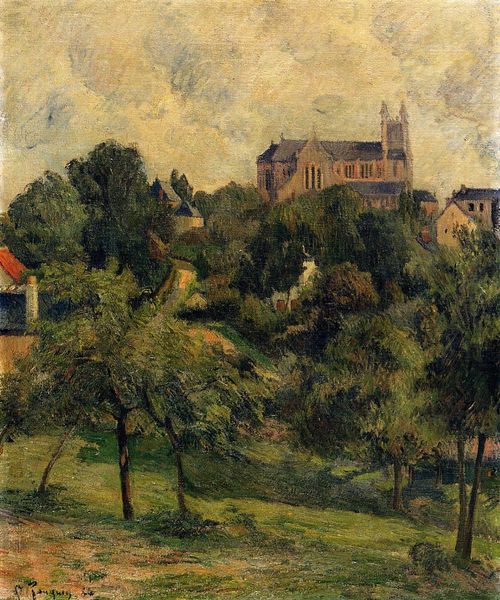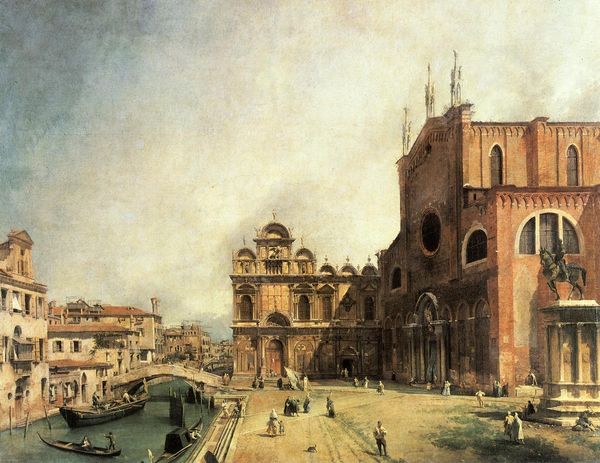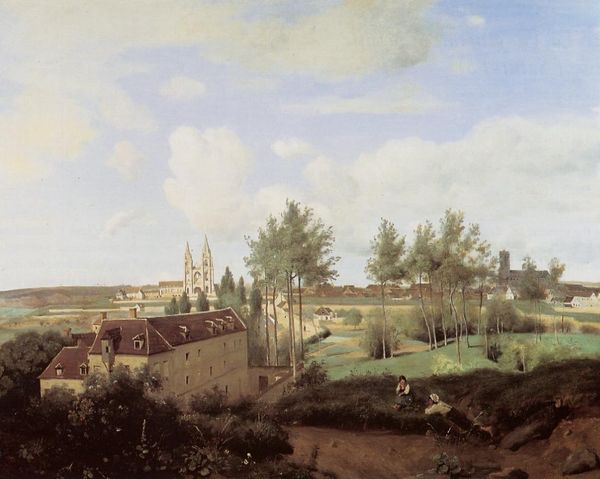
painting, oil-paint, architecture
#
painting
#
oil-paint
#
landscape
#
oil painting
#
romanticism
#
cityscape
#
genre-painting
#
watercolor
#
architecture
Dimensions: 64 x 51.5 cm
Copyright: Public domain
Editor: This is "Chartres Cathedral" painted by Camille Corot in 1830. The soft, warm palette creates a really tranquil mood, and yet the sheer scale of the cathedral still feels imposing, dominating the composition. What stands out to you about it? Curator: It’s fascinating how Corot uses the cathedral not just as architecture, but as an enduring symbol of faith and civic identity. Notice the figures in the foreground—they're almost dwarfed by the stones they're working with, and certainly by the cathedral looming in the background. Does that contrast strike you as deliberate? Editor: Yes, absolutely. They emphasize how the Cathedral, as a symbol, has permanence when compared to the everyday people in the scene. It's an interesting juxtaposition. Curator: Exactly! Think of Chartres as a visual anchor. Cathedrals like this acted as a communal memory palace. They served as a reminder of spiritual narratives and societal values, communicated through stained glass, sculpture, and the very layout of the space itself. These symbols persist through generations, influencing culture and psychology long after the cathedral's construction. Editor: So, it’s more than just a building; it's a repository of collective history? Curator: Precisely! Consider also the soft, almost dreamlike quality of the painting. It invites us to contemplate not only the physical structure but also the emotional and spiritual resonance of such a monument. Editor: That makes so much sense. I'll never look at a cityscape the same way again. Thanks! Curator: My pleasure! I now see Corot’s approach differently. This exercise reveals fresh perspectives; I'm going to use it with future students, thanks to you!
Comments
No comments
Be the first to comment and join the conversation on the ultimate creative platform.
